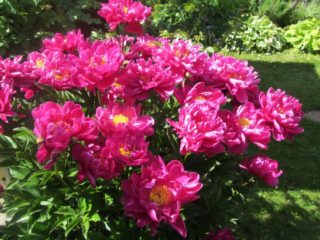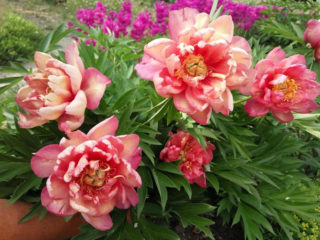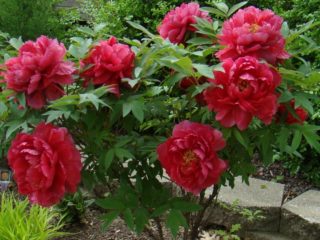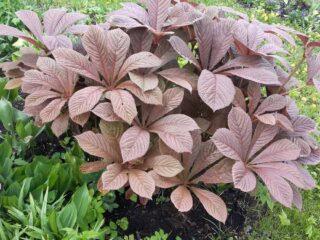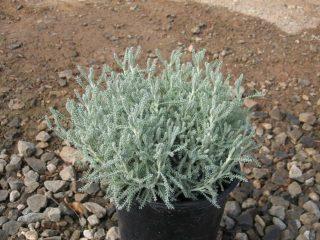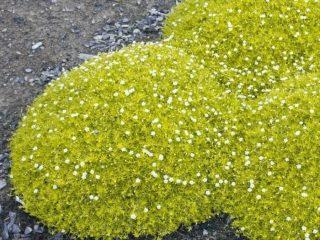Content
The mullein plant is an ornamental perennial that is in demand among gardeners. Before planting a crop on a site, you need to study its characteristics.
Description of the mullein flower with photo
Verbascum, royal scepter, celsia or mullein (Verbascum) is a plant of the Norichinaceae family. It has a long tap root, the leaves form a large rosette up to 60 cm in diameter. In biennial plant varieties, only plates are formed in the first year, and the peduncle appears in the second season. The leaves reach 50 cm in length and have a simple oval shape. The plates are quite dense, entire edges, and have a silvery-white felt on the surface.
At the beginning of summer, the verbascum plant produces one or several peduncles up to 2 m above the ground from the center of the rosette.At the tops of the stems, dense long inflorescences bloom, consisting of numerous small buds of a regular cup shape. The petals are mostly white or yellow, with red, purple and orange varieties also found.
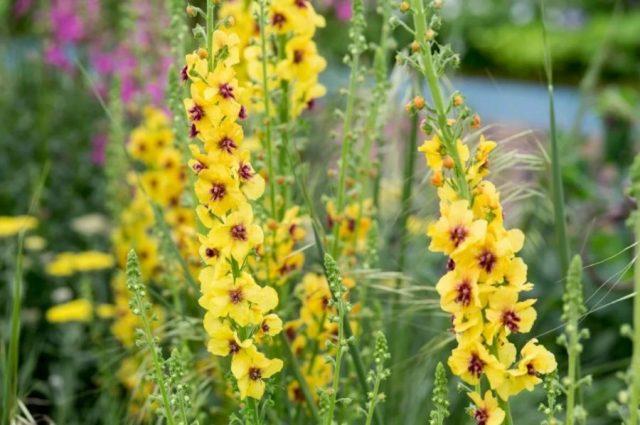
Verbascum flowering with proper care can last up to three months.
The flowers of the verbascum plant appear on the shoots in June and bloom from bottom to top. Each of the buds lives only one day, but new ones open in place of the faded ones continuously. The decorative period of the flower ends only in September. The fruits are small bivalve capsules with numerous small seeds.
Where does mullein grow?
Photos and descriptions of the common mullein state that it can be found mainly in the Mediterranean. The flower also grows in Asia and European countries, North Africa.
The culture usually settles in wastelands and on roadsides, in meadows and rocky screes. An unpretentious flower easily takes root in almost any conditions.
Winter hardiness of perennial verbascum
When sowing verbascum, you need to take into account that its winter hardiness is not the highest. The crop can tolerate cold temperatures down to -20 °C with good shelter. Growing a flower in regions with a harsh climate is quite difficult, and problems often arise with wintering.
Useful properties of mullein herb
The medicinal properties of mullein herb have been known for many decades. When used correctly, the plant:
- fights the bacterial process;
- removes mucus from the respiratory tract;
- comprehensively strengthens the immune system;
- promotes rapid recovery from colds;
- improves skin condition;
- accelerates the healing of wounds and cuts;
- stops bleeding;
- relieves joint pain.
Both stems and flowers are used as medicinal raw materials. Based on verbascum, oils for external application, strong tinctures, milk decoctions and aqueous extracts are prepared.
Application of mullein herb
The properties of the mullein plant are beneficial for a wide variety of ailments. It is recommended to use products based on decorative flowers:
- for bronchitis and sore throat;
- for influenza and ARVI;
- for arthritis and rheumatism;
- for diseases of the oral cavity;
- for tuberculosis;
- for warts on the skin;
- for burns and cuts;
- for diseases of the digestive system.
The plant has antiviral properties. You can use it for herpes - if the sores that appear are treated in a timely manner, they will disappear much faster than usual.
Varieties of the mullein plant
The description and photo of medicinal mullein make it clear that the plant is represented by many varieties. It is customary to distinguish several varieties.
Dense-flowered
Densely flowered, tall or sceptered mullein (Verbascum densiflorum) is a herbaceous biennial up to 1.2 m tall. It has thick straight shoots and oblong leaf blades with a serrated edge. Blooms with yellow buds forming spike-shaped apical racemes.
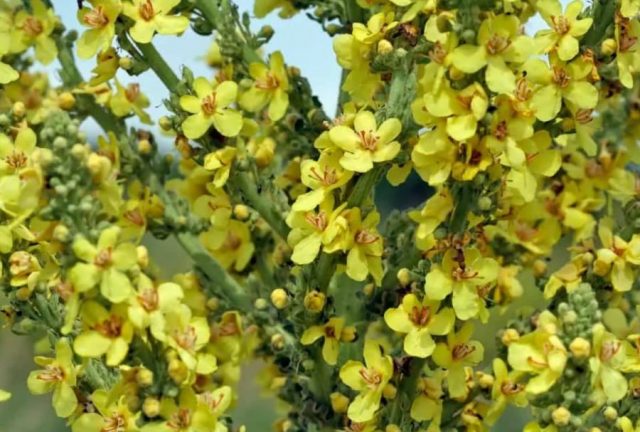
Flowering of densely flowered mullein begins in June and lasts until the end of August
Common mullein (bear's ear)
Common mullein (Verbascum thapsus) grows up to 2 m above the ground. It blooms with yellow spike-shaped inflorescences, the stems and leaves are covered with thick white felt. The decorative period lasts all summer; the herbaceous plant finally fades only by September.Common verbascum has strong medicinal properties; the flower is often used in folk medicine.
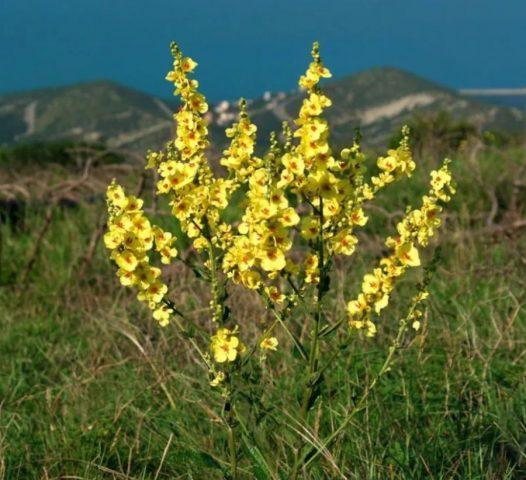
Common verbascum is distributed throughout the world in temperate and warm climates.
Paniculate
Paniculate verbascum (Verbascum lychnitis) is also called powdery. The plant is found in European countries, in Siberia and the Caucasus, the stems and leaves are densely covered with grayish-green hairs. The inflorescences are pyramidal panicles formed by yellow or whitish buds. Flowering occurs in the second half of summer in July and August.
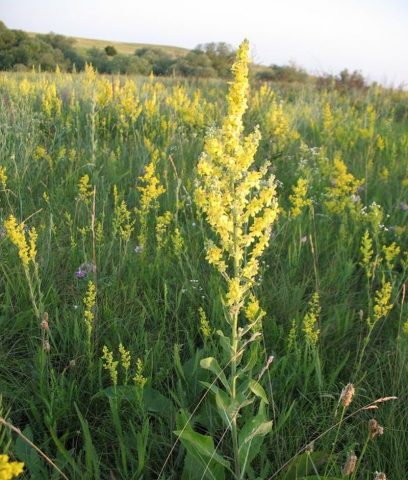
Paniculata verbascum rises up to 1.6 m above the ground surface
Violet
Verbascum phoeniceum is a medium-sized variety of plant up to 50 cm above the ground. It has a thickened root and a thin straight stem. The leaves are collected mainly at the base and have an oblong or heart-shaped shape. The inflorescences are racemose, loose, and consist of purple or white buds.
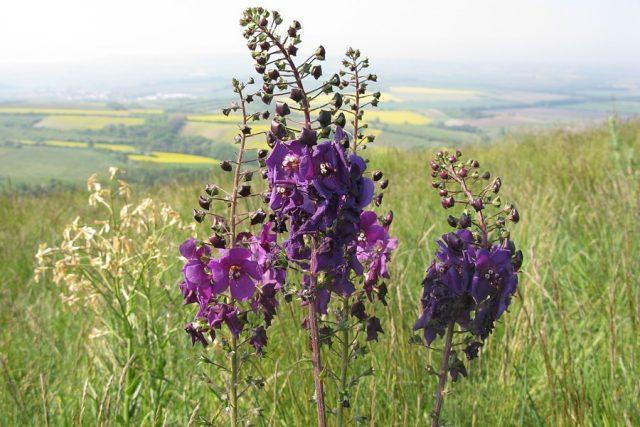
Flowering of purple verbascum occurs quite early - in June and July.
Black mullein
Black mullein (Verbascum nigrum) is a biennial or perennial variety. It has erect leafy shoots of a reddish-black color and green leaves with dense pubescence in the lower part. The yellow or white buds are collected in bunches of 5-10 pieces and form dense apical panicles. Flowering begins in June and continues until mid-summer.
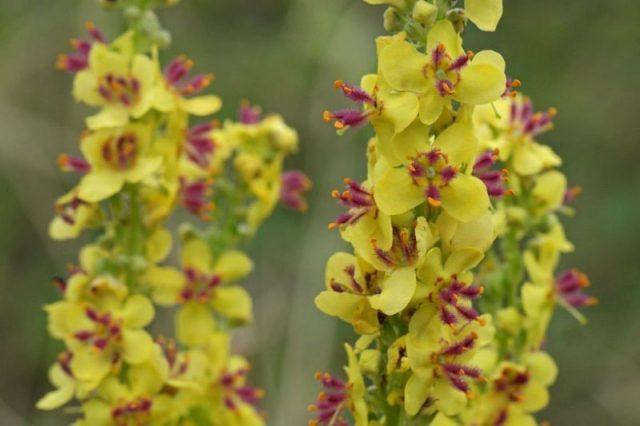
Black verbascum stretches up to 1.2 m above the ground
Mullein officinalis
Mullein (Verbascum phlomoides) grows up to 1.5 m above the soil surface. The shoot of the plant is straight, cylindrical in shape, and can branch at the top. The leaves and stem are covered with grayish or yellowish soft felt.The buds of the variety are yellow, collected in dense spikelets. Verbascum blooms in June and remains decorative until the end of July.
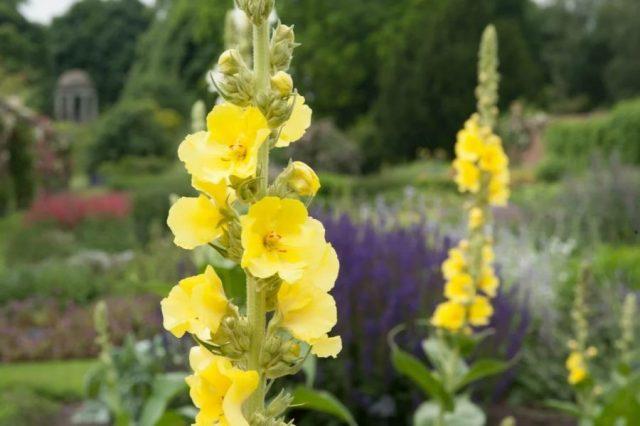
Medicinal verbascum is widespread in the southern regions of Europe, the Caucasus and Asia.
Planting and caring for verbascum in open ground
Planting a verbascum flower for care in open ground is done in the spring, in early or mid-May. A site for the plant is selected that is well-lit or lightly shaded. The soil should be drained, loose, clayey and heavy soils should be avoided. The plant develops best on rocky, poor soil with an alkaline composition.
Direct planting of verbascum for care is carried out according to the following scheme:
- Dig a hole in the area and pour gravel or coarse river sand onto its bottom.
- Garden soil with the addition of humus is placed on top.
- Remove the verbascum seedling from the container and place it in the center of the hole.
- Fill the voids with soil and lightly press it down.
- Abundantly moisturize the plant.
The root neck of the flower should be left flush with the surface of the earth. To make moisture evaporate from the soil more slowly, verbascum can be mulched immediately.
Caring for the mullein plant after planting is quite simple. Attention needs to be paid to several main points:
- Watering. The flower tolerates drought well and does not require frequent moisture even in summer. It only needs to be watered during long hot periods without precipitation.
- Feeding. Verbascum prefers poor soils and develops best on them.The flower does not need to be fertilized with nitrogen, but it is allowed to add wood ash to the water for irrigation from time to time.
- Loosening. Periodically, turn up the soil at the roots of verbascum using a rake. The procedure prevents the growth of weeds and also increases the breathability of the soil.
- Trimming. Verbascum does not need pruning, but it is recommended to remove the peduncles after wilting. This will not only prolong the decorative effect, but will also avoid self-seeding.
When grown and cared for, perennial verbascum usually does not require tying to supports. The stems of the flower are very rigid and thick, rarely breaking even in strong winds.
Verbascum tolerates wintering well in open ground. In warm regions and the middle zone it is allowed to be left without shelter. In Siberia and the Urals, with the onset of autumn, you need to hill up the lower part of the plant and cover it with dry leaves or spruce branches in a layer of up to 20 cm.
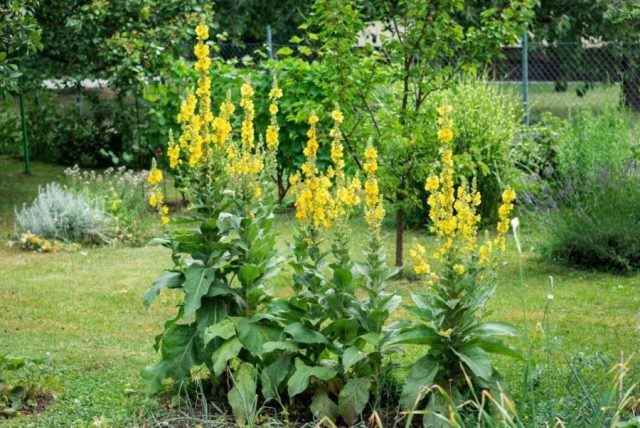
Young verbascum seedlings, which do not yet have high endurance, especially need winter shelter
Reproduction
Photos of a mullein plant in the garden show that the crop is propagated in three main ways. A flower can be obtained from seeds, divided, or using root shoots.
Growing verbascum from seeds at home
Verbascum seedlings should be planted in early April. At home, prepare a shallow box for the plant, make drainage holes at the bottom and fill the container with nutritious soil with added sand. The substrate is properly moistened and the seeds are sown evenly over the surface.
For the first time, the box is covered with film and put in a warm place. After a couple of weeks, when seedlings form, the shelter is removed and the seedlings are moved to a lighted window.Seedlings are transferred to the ground after the end of return frosts in late spring or early autumn.
Root cuttings
Planting the royal scepter mullein for care can be done using root shoots. The propagation procedure is carried out in late autumn. From an adult bush, root sections of about 7 cm are cut and the cuttings are planted vertically in a loose substrate, leaving about 1.5 cm above the surface. Until spring, the shoots are germinated indoors, and after warm weather sets in, they are transferred to the ground.
Dividing the bush
Adult perennial verbascum over three years old can be propagated in this way. At the end of August or early September, the flower is dug out of the ground and cut along the rhizome into several parts. The divisions are transplanted into separate holes and watered abundantly.
Verbascum in landscape design
Photos of perennial verbascum in a flower bed show that most often the flower is planted in dry rocky gardens. You can combine it with milkweed and eryngium, yarrow and teasel. Good neighbors for the plant are also rosemary, lavender, Byzantine chistets or narrow-leaved feather grass, sage and cornflower.
Verbascum combines well with cereals - wormwood and pinnate bristle. The flower is placed next to poppies, roses and gypsophila to emphasize the beauty of ornamental plants.
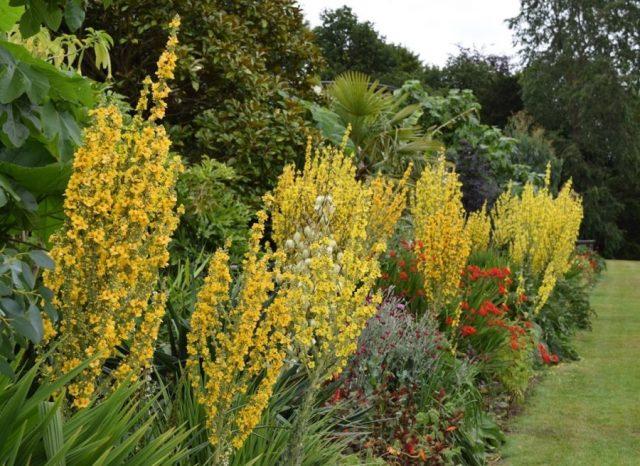
Verbascum can be planted as part of a border or hedge.
Conclusion
The mullein plant does not require special care and at the same time looks very attractive in landscape design. Verbascum can be planted on poor soil - it tolerates poor soils well, but develops less readily in fertile ones.
